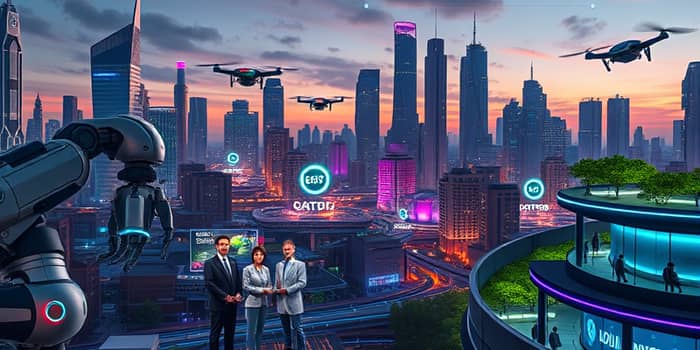
In late 2025, businesses worldwide face an unprecedented opportunity to harness automation and AI for transformative impact. As markets evolve and competition intensifies, leveraging advanced technologies has become essential for driving efficiency, enhancing productivity, and achieving sustainable growth. This article explores the key trends, benefits, challenges, and strategic approaches that define exponential market growth and adoption in the automation era.
Over the past six years, the global automation landscape has expanded dramatically. The industrial automation market surged from $7.8 billion in 2019 to $16 billion in 2025, while the broader AI market has reached a valuation of approximately $391 billion this year. With 77% of companies exploring or deploying AI solutions and 60% implementing automation tools, organizations are embracing new capabilities at an astonishing rate.
Digital channels now handle 80% of B2B sales engagements, and 74% of sales professionals anticipate that AI will fundamentally reshape their roles. Meanwhile, in the United States, 40% of employees report using AI at work, a doubling from just two years ago. These figures highlight a widespread shift toward digitally empowered operational models that prioritize speed, scalability, and data-driven decision making.
One of the most compelling advantages of automation lies in its ability to deliver measurable returns on investment. Companies leveraging AI report average ROI increases of 10–20%, driven by error reduction, faster cycle times, and enhanced decision accuracy. Knowledge workers save an average of five hours per week, translating into higher output and lower operational costs.
Generative AI is poised to boost global GDP by 1.5% by 2035 and nearly 3% by 2055. Moreover, up to 40% of current GDP could be significantly influenced by AI-driven automation, particularly in mid- to high-earning occupations. As organizations scale their automation efforts, initial productivity gains—though modest today—will accelerate, laying the groundwork for future competitiveness.
Automation and AI are reshaping critical business areas from customer engagement to back-office operations. Predictive analytics, machine learning, robotics, and IoT platforms are unlocking new levels of efficiency and insight. Leading industries such as healthcare, financial services, manufacturing, and technology are at the forefront of this transformation.
Case examples underscore these trends: Netflix’s AI-driven recommendations generate over 80% of content engagement, while Tesla’s Gigafactory hyperautomation cut production costs by 30% and boosted efficiency by 40% between 2020 and 2024. In healthcare, AI has even enabled the development of a drug candidate that shows promise against resistant bacteria in laboratory tests.
Allied to technological advancements is the changing nature of work. Although AI could displace 92 million jobs by 2030, it is also expected to create 170 million new roles globally. Knowledge workers express overwhelmingly positive sentiment, with 90% reporting that automation has improved their job quality. Employees also benefit from saving an average of five hours per week, allowing them to focus on higher-value tasks and creative problem-solving.
Organizations must therefore invest in continuous learning programs to bridge skill gaps and prepare teams for evolving roles such as AI ethics officers, automation architects, and data strategists. By fostering a culture of experimentation and upskilling, companies can ensure that their workforce remains adaptable and empowered to maximize the potential of emerging technologies.
Despite its promise, automation deployment faces hurdles. Unstructured data remains a major obstacle for 95% of businesses, while data silos and fragmented systems impede seamless integration. Additionally, the initial productivity impact of AI may appear modest—only 0.01 percentage points in 2025—but this figure will grow as organizations overcome implementation barriers and refine their strategies.
To address these challenges, enterprises are adopting hyperautomation to achieve end-to-end process visibility and control. Centralized data platforms break down silos and enable real-time feedback loops between departments. Enterprises should prioritize data governance frameworks, invest in robust data pipelines, and collaborate closely across functions to unlock real-time, actionable data insights that drive informed decision-making.
Looking ahead, automation and AI will continue to redefine competitive landscapes. As strategic planning itself becomes increasingly automated—currently only 15% but potentially up to 50% in coming years—organizations must adapt their structures and processes to thrive. The economic implications are profound, with generative AI set to influence nearly 40% of GDP and open new frontiers in innovation.
By aligning technology investments with strategic imperatives, companies can achieve scalable business expansion and maintain sustainable competitive advantage. The journey requires vision, agility, and a commitment to harnessing automation thoughtfully, but the rewards—higher productivity, improved customer experiences, and robust growth—are well within reach.
References













